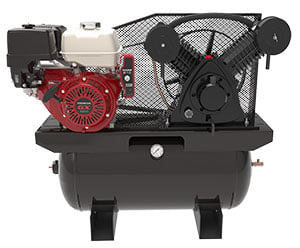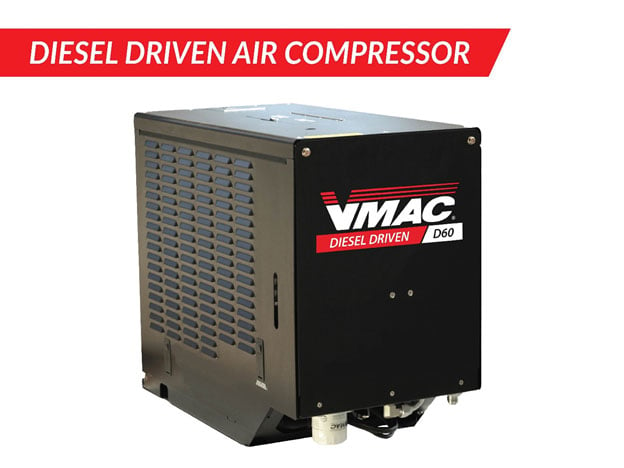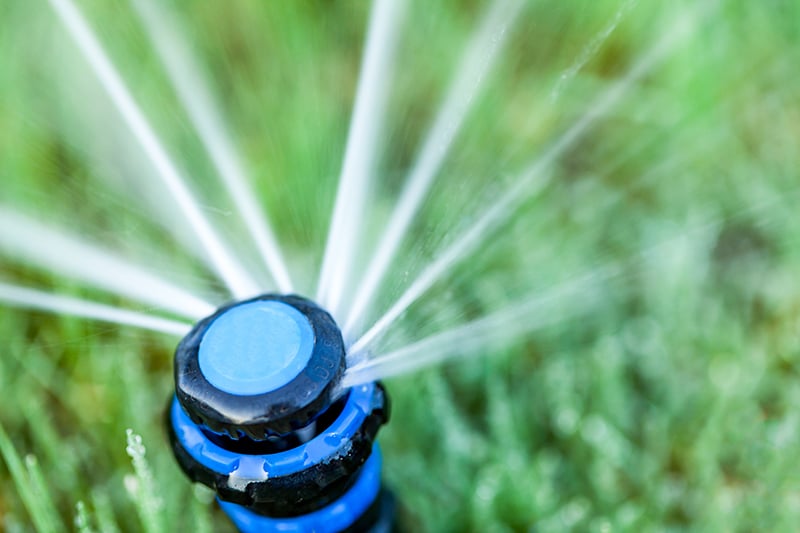Air Compressors For Landscapers & Sprinkler Winterization Work
Nothing ruins someone’s day like a burst pipe when it’s freezing outside, so it’s crucial to winterize sprinkler and irrigation pipes every year. One of the most effective ways to winterize these systems is the blowout method, in which landscapers use an air compressor to blow out the water in pipes.
Blowing out water from the pipes ensures there is enough room within the pipes for any residual moisture to freeze and expand without breaking the pipes.
Air Compressor Requirements For Winterization
When choosing an air compressor for winterization, landscapers need to consider both CFM, the air volume, and psi, the pressure of that air. The ideal air compressor for winterization typically produces between 20 to 50 CFM at 50 psi.
Water will remain in the pipes if an air compressor doesn’t produce enough air. If the air compressor pushes too much air or is pressurized too high, the compressed air can crack pipes and break sprinkler heads, causing permanent damage to the irrigation system. Lower CFM ranges are ideal for smaller pipes under 1”, while larger CFM ranges may be required for pipes larger than 1”.
Landscapers looking for a rough estimate of their CFM requirements can use the following formula:
Gallons per Minute (GPM) per Zone / 7.5 = CFM Requirement
In other words, divide the GPM of each sprinkler zone by 7.5 to get a quick estimate of the CFM requirements. (Source.) For example, a 225 GPM system divided by 7.5 would require 30 CFM of compressed air. If you plan to blow out multiple zones at a time, your CFM requirements will increase.
Although 20-50 CFM is the most common air compressor recommendation for landscapers, some professionals are comfortable with tow behind air compressors that produce higher CFM than the standard guidelines and have learned how to use these compressors without damaging the sprinkler system.
Regardless of CFM, the psi should always remain low, as pipes are prone to cracking when the air pressure is too high. Rigid PVC pipe can handle slightly higher pressures of up to 80 psi, while polyethylene pipe is more likely to break above 50 psi.
The Problem With Winterizing Using Reciprocating Air Compressors
 Reciprocating, or piston air compressors are popular with landscapers because they can often meet air demand with a minimal price point. However, it’s important to note that reciprocating air compressors don’t always produce the volume of air that their CFM rating suggests.
Reciprocating, or piston air compressors are popular with landscapers because they can often meet air demand with a minimal price point. However, it’s important to note that reciprocating air compressors don’t always produce the volume of air that their CFM rating suggests.
After a reciprocating air compressor builds up the air in its tank, the system produces a burst of air that initially meets the CFM rating. But the air quickly loses its volume as the tank empties, which means some air leaving the compressor is significantly lower than the CFM rating.
Landscapers must ensure that their air compressors can run at the desired CFM for at least five minutes at a time. Most reciprocating air compressors will require an air receiver tank that is at least 10 gallons to accomplish this, but a 20-, 30- or 50-gallon air tank may be required for larger sprinkler systems with multiple zones.
By contrast, rotary screw air compressors operate at 100% duty cycle and produce a steady stream of compressed air at their CFM rating. For this reason, rotary screw air compressors typically do not require an air receiver tank for landscapers to perform winterization work.
Air Compressor Requirements Summary
The ideal air compressor for landscapers typically meets the following requirements:
- Rotary screw type (or reciprocating type with a large air receiver tank)
- 20-50 CFM
- 50 psi
CFM Requirements By Sprinkler Size
To recap, landscapers can quickly calculate their CFM requirements using the GPM per zone / 7.5 = CFM formula. Alternatively, use this chart to eliminate the math and find out how much CFM you need:
| GPM Per Zone | CFM Requirements |
|---|---|
| 150 GPM | 20 CFM |
| 225 GPM | 30 CFM |
| 300 GPM | 40 CFM |
| 375 GPM | 50 CFM |
| 525 GPM | 70 CFM |
| 750 GPM | 100 CFM |
Once landscapers are confident in the air compressor type, CFM requirements, and psi requirements, it’s time to explore available air compressors.
Rotary Screw Air Compressors For Winterization
Landscapers looking for a new rotary screw air compressor for winterization have a few solid options. The following air compressors are all from VMAC’s air compressor line-up and can mount to a landscaping truck or skid.
G30 Gas Driven Air Compressor

VMAC’s G30 gas driven air compressor is the most affordable rotary screw air compressor available in the market. It produces 30 CFM of air at continuous duty, providing ample air for blowing out pipes and sprinkler systems. The default setting is 100 psi, which should be reduced using a pressure regulator valve to 50 psi for winterization work.
The G30 weighs only 205 pounds, making it significantly lighter than reciprocating gas powered air compressors. It is also 50% smaller than competitive models, allowing landscapers to fit more tools, supplies, and equipment on their trucks.
Landscapers can also choose between two models: a standard horizontal design, and a stacked design that is made to fit within a work truck compartment.
D60 Diesel Driven Air Compressor

Landscapers with diesel trucks may prefer VMAC’s D60 diesel driven air compressor, which can plumb directly into the truck’s fuel source. This feature eliminates the need to think about refueling the air compressor, as it gets fuel right from the truck.
The D60 is a powerful system, providing 60 CFM of air. It can easily handle residential blowout work and most commercial work as well. Like the G30, the D60 is set to 100 psi by default and will need to be regulated with a pressure regulator valve to 50 psi to prevent sprinkler system damage.
The D60 has an optional wheel kit accessory, making it easy to wheel around various job sites. Alternatively, the D60 can be mounted directly to a landscaping truck. Either option provides great versatility and easy access to work sites.
Check out the D60 air compressor now.
UNDERHOOD Air Compressors

Another highly innovative air compressor solution for landscapers is the UNDERHOOD air compressor system. UNDERHOOD air compressors mount in the engine compartment of the work truck, which means they take up minimal deck space. They are an excellent solutions for landscapers who need to save cargo space and reduce their GVW.
The UNDERHOOD comes in four models:
- UNDERHOOD40 Truck Series – Produces up to 40 CFM
- UNDERHOOD40 Van Series – Produces up to 40 CFM
- UNDERHOOD70 – Produces up to 70 CFM
- UNDERHOOD150 – Produces up to 110 CFM
The UNDERHOOD is a belt-driven air compressor that uses the vehicle’s engine to power the system. As operators use compressed air, the truck or van automatically idles up and down to produce the air required. Because the air compressor integrates with the vehicle, landscapers with UNDERHOOD air compressors have instant air on demand anywhere their vehicle goes.
Learn more about UNDERHOOD air compressors here!

